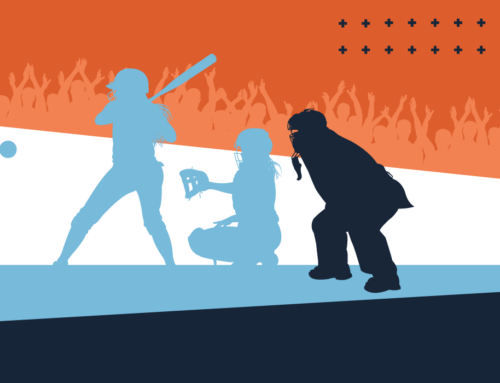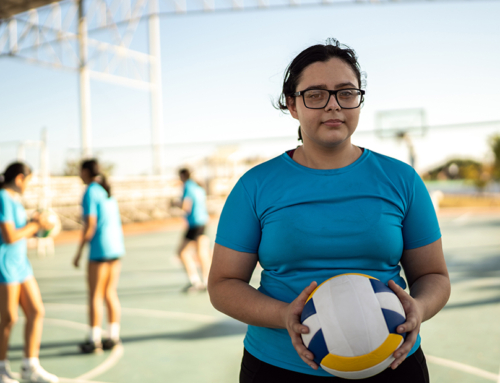With youth sports participation rates at an all-time high, it stands to reason that injuries are also on the rise. However, the number of sports injures that can be specifically attributed to overuse—nearly half of those sustained by middle school and high school athletes, according to Safe Kids USA—has gotten way out of control. In fact, according to the Centers for Disease Control, more than half of youth sports injuries could have been avoided.
I’ve outlined a simple five-step plan to help reduce the occurrence of overuse injuries in youth sports. Take a look at the following recommendations and see how many of you—or the athletes you work with—are guilty of ignoring them. You may be surprised by how much you’re unknowingly contributing to the current injury epidemic.
1. Avoid Early Specialization In One Sport
This is certainly not groundbreaking advice. Experts have warned about the dangers of early specialization for years. Unfortunately, the warnings seem to have fallen on deaf ears. By repeatedly using the same muscle groups and movement patterns, often on an almost year-round basis, young athletes are increasing their chances of developing a whole host of injuries. Whether it’s a swimmer with chronic shoulder pain or a Little League baseball player with elbow inflammation, kids routinely push their bodies too hard in hopes of achieving sports stardom.
The fix here is pretty simple: encourage kids to play multiple sports as a means to improve their overall athleticism and reduce injury risk. Doing so allows them to develop different movement skills and avoid unnecessary strains on their joints and connective tissue.
The problem is that the hyper-competitiveness that currently characterizes youth sports at every level makes early specialization seem like it’s the only way for kids to keep up with the competition. When all of their friends are playing on multiple travel teams, attending camps and clinics to further hone their skills, and doing regular sport-specific workouts, it’s hard not to want to follow suit. In the long run, though, specializing in one sport from an early age might be one of the worst things a kid can do to his or her body.
2. Give It A Break
In conjunction with their warnings about the dangers of early specialization, many medical experts also recommend that young athletes take regular breaks from training and competition. Regardless of what sport or sports they play, kids should take off a few weeks (or an entire month) a couple of times per year. Besides giving their bodies a much-needed rest from repetitive movements like pitching a baseball or shooting a hockey puck, the breaks will allow them to recharge their mental batteries.
As youth sports have become more competitive, kids often feel pressure from parents and coaches to perform at their best. And although on the surface it may seem like taking time off will somehow place them at a disadvantage, it’s often exactly what a young athlete needs to break through physical and mental plateaus.
This doesn’t mean kids should take several weeks off from physical activity. Simply trying a different sport, even for purely recreational purposes, can be a great way to keep fit and unwind from the stress of regular competition. Plus, playing different sports will help young athletes develop various physical skills they don’t use in their primary activity. For instance, shooting hoops or playing tennis will help with hand-eye coordination and reaction time, while swimming and distance running are great ways to boost endurance.
3. Train With Your Brain
We need to take a collective step back and resist the temptation to train children like they’re mini-professionals. Thanks to the current popularity of sports performance training centers, boot camps and CrossFit-style workouts, more young athletes take part in advanced athletic conditioning programs. And although it may seem like this type of training approach is exactly what competitive young athletes need, it’s often anything but.
Rather than focusing on age- and gender-appropriate drills that will help them build a sound movement foundation, too many kids are being tethered to weighted sleds and asked to hoist truck tires, or do repeated explosive jumping drills. These are all excellent conditioning tools for mature athletes who possess the physical attributes necessary to execute them effectively; but they can be quite dangerous for growing bodies that lack the kind of strength, mobility and positional awareness they require.
To be fair, though, adults are not the only ones guilty of this. More and more, kids themselves gravitate toward drills they think will give them a leg up on their competitors. What they either don’t know or don’t care to acknowledge is that although this approach may produce positive results in the short term, it’s bound to spell trouble later on by contributing to existing physical imbalances. Think about it. If they can’t do a simple bodyweight squat without their knees pinching together or their lower back rounding, what happens when they have to rapidly decelerate their body when landing from an explosive jump, where the landing forces can be as much as five times their body weight?
It’s worth mentioning that this more sensible approach to training applies to older kids as well. Athletes who didn’t take the time to develop things like coordination, reaction time, mobility and systemic strength at an early age are at even greater risk for training-related injuries. Since many youngsters are rife with physical imbalances from years of sports specialization and imbalanced training, advanced conditioning drills and heavy loading in the weight room might be the proverbial straw that breaks the camel’s back. Athletes who fall into this category would be much better served doing more corrective stretching and strengthening to help reverse physical imbalances and swing the scale back in their favor.
4. Work On Flexibility
As a general rule, young athletes are much tighter than they should be. This is partly because during their growth spurts, bones grow at a rate that muscles and connective tissue can’t keep up with. This can make for some extremely awkward movement mechanics, and it’s also why coaches must take care when prescribing stretching exercises for growing young bodies. During those growth-spurt years, it’s important not to place a lot of prolonged tension on muscles that are already tight by doing a lot of static stretching. Mobility drills that improve active range of motion provide a more effective alternative.
Drills like Spidermans, Iron Crosses, Open Books and Pike Walks are all great ways to improve mobility around the hips, ankles and thoracic spine. Once kids get into their later teenage years, static stretching becomes a more viable way to improve range of motion. Best done after intense workouts or at other times throughout the day (before bed is a great option), static stretches can cement lasting changes in muscle length, but they are more appropriate for bodies whose rate of growth has slowed considerably. Key areas to focus on include the hamstrings, glutes, hip flexors, calves, pecs, lats and neck.
Granted, improving flexibility and mobility don’t typically rate high on a young athlete’s “to do” list, but they’re probably among the most important training approaches for improving long-term health and well-being. Throw in more attention to proper posture and you’ll have a sound plan for reducing injury risk.
5. Recover
These days, it seems as though many parents and coaches are under the impression that kids’ bodies are virtually indestructible. It’s as if just because they’re young, they’re supposed to be able to physically withstand schedules that allow for practically zero down time between bouts of intense physical exertion. I can’t tell you how many times I’ve had an athlete show up for a workout looking and feeling like garbage, because he was gassed from either a competition, a practice or a dreaded weekend tournament. And please, don’t give me the old “kids today need to toughen up” speech, or tell me that “we went though the same thing at their age.” No, we didn’t! Oh sure, we worked hard, but not nearly with the same kind of year-round focus that today’s athletes are encouraged to develop. Between all of the camps, clinics, showcases and specialized training, it’s a wonder these kids actually have any energy left to play their sport(s).
Since young athletes can’t necessarily count on their coaches to incorporate much-needed recovery time into their schedules, it has to fall on the kids. Encouraging kids to stretch and do some foam rolling can reduce muscular tension and allow them a chance to relax and unwind. Setting aside a few minutes just a couple of times per week can make a real difference in the way an athlete feels and performs. Even if all it involves is rolling out some tight, sore muscles while watching television, or doing a couple of stretches each night before bed, they’ll be better for it. Adding a few deep breathing exercises in a nice, quiet room can reduce the physical and emotional stress that often results from competitive sports participation.
All of this advice may seem like common sense, but it is the exact opposite of what legions of kids currently do. By pushing their bodies too hard too soon, many are sustaining injuries that can have serious implications on their long-term health. As parents, coaches and trainers, that falls on us! We have to do more to educate young athletes about the dangers associated with this approach. No one is saying kids can’t, or shouldn’t work hard, but there’s a big difference between working hard and overworking.
Original Article Posted On stack.com



